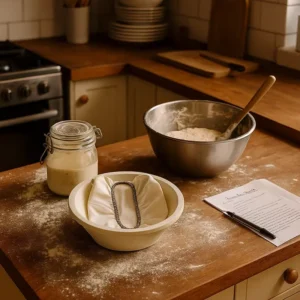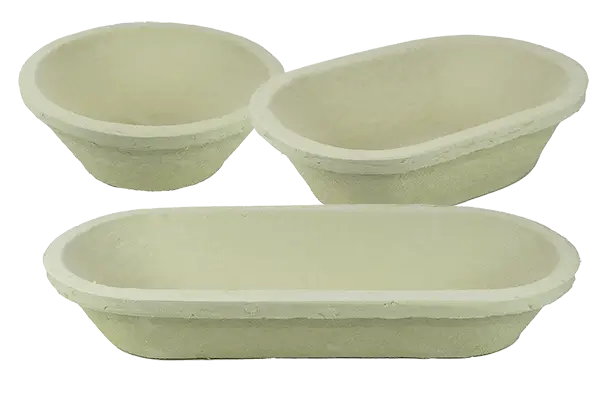
Introduction: Embarking on Your Sourdough Journey
Introduction: Embarking on Your Sourdough Journey If you’ve ever dreamed of baking crusty, aromatic sourdough in your own kitchen but didn’t know where to start,
For nearly two centuries, bread tins (proofing baskets or bannetons) have been a baker’s trusted tool. Our company, Crust&Craft (it was called Brotformen than), began this journey in 1847, initially crafting molds from natural materials like straw.
Later, rattan became popular, but its ecological impact raised concerns. In 1920, we made a decisive shift toward sustainability by embracing wood pulp. The feedback from the customers has also played an impact in the choice of switching the production to wood pulp bannetons.
And that is why the question “How to Use a Wood Pulp Banneton” is one of the most asked by our new customers. Wood pulp offers the ideal blend of tradition and environmental responsibility. We source it exclusively from fresh spruce wood grown in sustainably managed forests.

Hand-made wood pulp bannetons offer several advantages for bakers of all levels, especially those baking at home. Here’s why they’re an excellent choice:
IMPORTANT NOTE:
Yes, it is possible to have deviations of the dimensions of our bannetons as our products are hand-made individually. The minimum and maximum tollerance is 0.3-0.5 cm.
Your hand-made banneton arrives ready to use! Give it a quick brush to remove any stray wood fibers.
Not mandatory but a good step to do before the first use of a wood pulp banneton: To ensure your banneton is hygienic, you can place it in your shut down oven at 100 – 120 degrees Celsius (around 210 – 250 degrees Fahrenheit) for a short time, using the residual heat after baking other items. This kills off any potential bacteria or microorganisms.
Once cool, give your banneton a quick brush to remove stray fibers, then generously dust the inside with flour or potato starch. This creates a non-stick layer and helps the dough release easily later.
If you have a linen liner for your banneton, place it inside before adding the dough. This adds an extra layer of protection and helps with dough removal.
You can choose the appropiate linen for your wood pulp banneton from the Cloth for Banneton on our webshop.
After your initial kneading, shape your dough into your desired form.
Gently place the shaped sourdough dough into the prepared banneton, seam-side up.
Cover the banneton with a banneton cloth or normal cloth to prevent drying. Allow the dough to proof according to your recipe.
When the dough has risen and passes the 'poke test' (a gentle press leaves a slight indentation), it's ready for baking.
How to Use a Wood Pulp Banneton
After each use, place your banneton in a warm, well-ventilated area to dry completely. You can again utilize the residual heat of your oven (at the same temperature as before) to speed up drying and eliminate lingering moisture that could lead to mold.
Once fully dry, brush out any excess flour with a clean, dry brush. Our specially designed brushes with extended bristles are ideal for this job. All our brushes are produced by other companies in Germany.
You can choose the appropiate linen for your wood pulp banneton from the Brush for Banneton on our webshop.
Stack completely dry bannetons inside each other for space-saving storage. Choose a dry, well-ventilated area.
6,92€ EXCL. VAT
7,03€ EXCL. VAT
5,60€ EXCL. VAT
9,69€ EXCL. VAT

Introduction: Embarking on Your Sourdough Journey If you’ve ever dreamed of baking crusty, aromatic sourdough in your own kitchen but didn’t know where to start,

As part of our strategic vision, we have embarked on a rebranding journey. So, from 1st of November 2023, Brotformed24.de becomes Crust&Craft – a brand-new look and identity, which reflects our dedication to excellence and customer satisfaction.